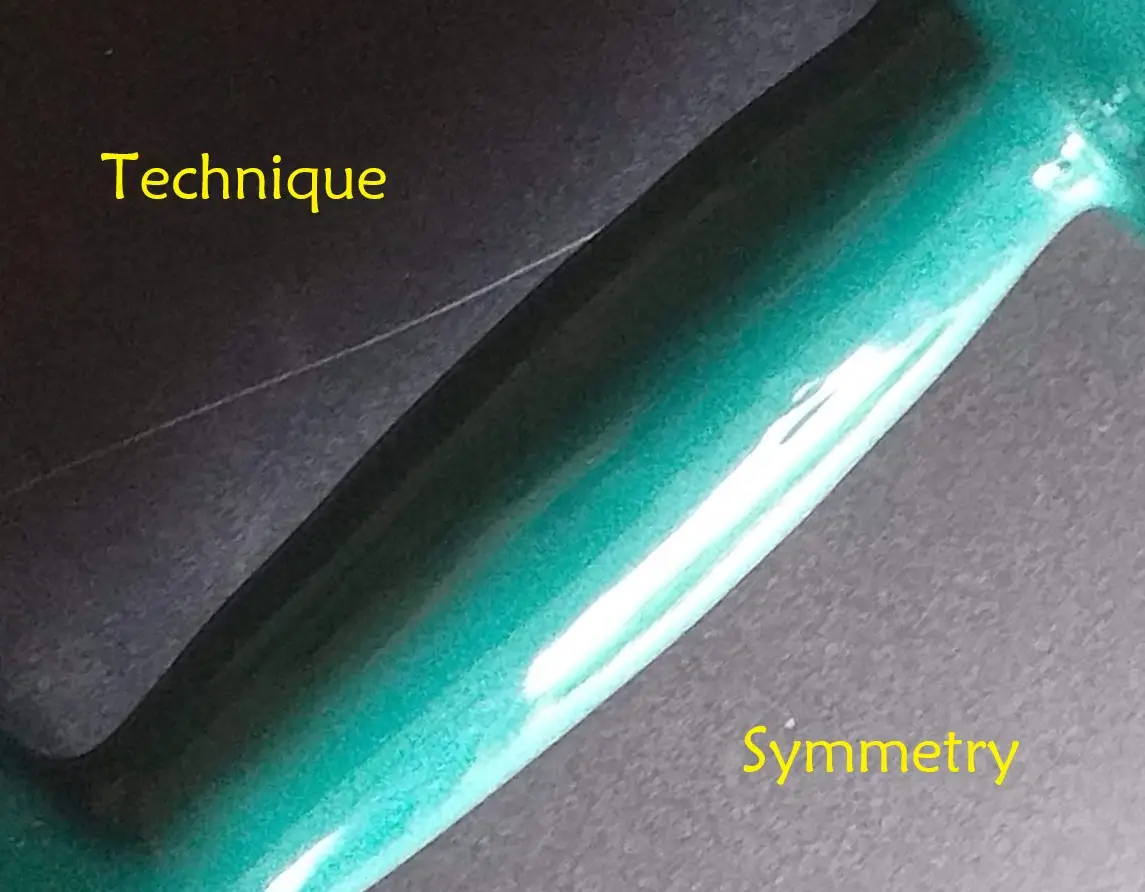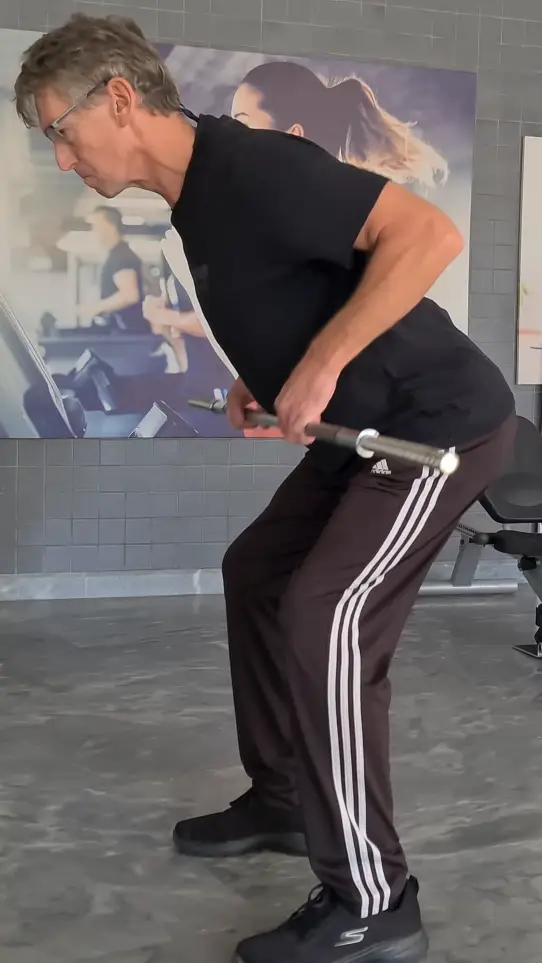All about the Barbell Row
(Back)
BENEFITS & MUSCLES WORKED: Middle and upper back muscles are engaged, but the Barbell Row will help to strengthen your entire trunk area – including abs, shoulders, and a little arms.
Watch Video
START POSITION: Hold the barbell in front of you and bend your knees, and stick out your bum at the back while you lean forward. Adjust the spacing of your hands on the bar so that it feels comfortable. Your arms should be straight down or slightly wider than your shoulders. Ensure the bar is well balanced, i.e., your grip must be symmetrical from the ends of the bar.
NOTES: Difficulty Rating: 73%
Don’t start the Barbell Row (by lifting the bar) until the angle of your back to the floor is comfortable. Before you begin, ensure that your knees are behind your toes, your knees have a good bend, your glutes are pushed back, and your head is looking up high and forward. Arms should be vertical and parallel to each other. Feet should be around shoulder-width apart. Ensure you are about to lift a weight you can handle. If you are learning the exercise, use just an unloaded bar. Like many gym exercises, the bent-over Barbell Row can be pretty dangerous if performed incorrectly; however, when done with proper technique, it offers numerous benefits.
If you have a weakness in your back or shoulders, consider skipping the barbell row and replacing it with safer and more stable exercises that support your back, such as the bench dumbbell row.
It’s essential to keep your back still during this exercise and to push your bum out behind you, whilst keeping your head up and your knees bent for stability. Don’t be afraid to lean forward a little more to ensure the bar isn’t going to smash into your knees. Remember – never use a stance where your knees are in front of your toes!
4 Common Mistakes when doing a Bent-over Barbell Row:
- Some people round their back when lifting, which can lead to injury. So, remember to keep your back straight and your core tight throughout the lift.
- Avoid using momentum to swing the weight up. This takes the focus off your back muscles and can also be risky. Focus on a slow, controlled lift and lower.
- Some people make the mistake of pulling the bar too high up their chest. You should aim for your lower chest or even your stomach. This helps work the right back muscles.
- Don’t let the weight pull you forward. Keep your core tight and your back straight. This will help you stay balanced and avoid injury.
12 Tips for a perfect Bent-over Barbell Row:
- Start with lighter weights to master the form. You can even practice the movement without any weight to get a feel for it.
- Keep your head in a neutral position, so don’t look up or down too much. Keep your neck in line with your spine. Pick a spot on the floor a few feet in front of you to focus on.
- Remember to breathe! Exhale as you pull the bar up, and inhale as you lower it down. This helps stabilize your core and gives you more power.
- You don’t need a super deep knee bend. Just a slight bend in your knees – enough to keep your back straight and protect your lower back. Think of it more as unlocking your knees rather than a full squat.
- If you’ve got longer legs, a slightly wider stance can help with balance. It’s all about finding what’s comfortable and stable for you. You can point your toes out slightly. This helps with your balance and makes the stance more comfortable. Just make sure they’re not pointing out too much, or it could put extra stress on your knees. Most people seem to feel more comfortable using a shoulder-width stance and with feet pointing straight forward.
- If you’re new to barbell rows, start with a lighter weight to focus on your form. Try practicing the movement without any weight at all, to get a feel for it.
- Stand with your feet shoulder-width apart, and bend your knees slightly.
- Grab the barbell with an overhand grip, hands a little wider than shoulder-width.
- Hinge forward at the hips, keeping your back straight and chest up, until your torso is almost parallel to the floor.
- Let the barbell hang straight down from your shoulders.
- Pull the barbell up towards your lower chest, squeezing your shoulder blades together.
- Lower the barbell back down slowly.
Which is best? Bent-over Barbell Row or Chest Supported Incline Barbell Row?
- The bent-over barbell row is an excellent exercise for developing a strong back and improving your posture. It works a lot of muscles at once, which is really efficient. The incline bench version is also a good option, especially if you have lower back issues, as the bench provides extra support.
- So, provided you don’t have any health issues or back trouble, the standing Bent-over Barbell Row is a better and more effective exercise than using a chest-supported bench, if done correctly. The standing bent-over row engages more core muscles and can help with overall stability.
The chest-supported row takes some of that core work out of the equation, which can be good if you’re focusing on isolating specific back muscles. However, please remember that if you have any back issues, notably lower back problems, you should always use the safer options for all exercises. Therefore, it is recommended to use the Incline Bench version of this exercise instead.
More about perfect form for the Bent Over Barbell Row.

